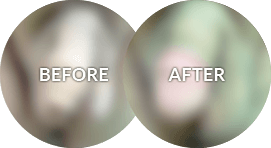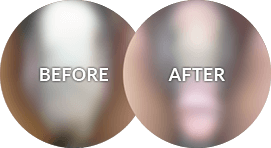Men’s Reproductive Health
Offered at our convenient location in San Diego

Men’s reproductive health is a multifaceted topic that encompasses various aspects of male sexual function and related health concerns. Everything from hormonal changes, stress, exercise, diet, and environment can alter a man’s reproductive system. Whether you decide on having children or not, staying knowledgeable about this area of your health is crucial to your overall well-being and relationship satisfaction.
Dr. Mo Bidair performs adult circumcisions, working to restore men’s confidence and improve their reproductive health. Dr. Bidair’s extensive background in urology can provide you with the education you need to feel self-assured in your decision to get a circumcision. At California Adult Circumcision in San Diego, we prioritize your intimate concerns with professionalism. Call (619) 486-5005 today to schedule your consultation or fill out our contact form to find out if this procedure is right for you. We offer appointments both in-office and via Skype.
Contents
About Male Hormones
Though female anatomy is often viewed as more complex, male anatomy is quite intricate and plays a huge role in the process of reproduction. About one-third of all cases of infertility between couples are due to complications with the man’s reproductive system. One-third are attributable to female infertility, and the last-third are due to unexplained causes. (1) So, it plays a fairly equal part in conception.
The production of sperm relies on 3 crucial hormones that are constantly in flux throughout life after puberty:
- Testosterone is a primarily male hormone that is produced in small amounts in women. It is responsible for the maintenance and growth of muscle mass, bone mass, and libido. It also determines male fat distribution and promotes less fat mass overall. This hormone increases 30-fold once puberty arrives.
- Luteinizing Hormone is released by the pituitary gland in the brain; it signals Leydig cells in the testes to produce testosterone which aids in making sperm.
- Follicle-stimulating Hormone maintains normal and healthy sperm production.
Though these 3 hormones are present in women, they trigger different anatomical and physiological processes within female anatomy.
Male Anatomy
It is important to understand each part of the male reproductive system and how it normally functions in harmony with the rest of the body:
Testes
Testicles are safely contained and temperature controlled by the scrotum- the term that refers to the outer sac of skin. The testes themselves are given a blood supply by spermatic cords, structures made of fibrous tissue and muscle. The testes contain tiny compartments called seminiferous tubules that provide an ideal environment for sperm creation.
Rete Testis and Epididymis
The seminiferous tubules are connected to more channels called the rete testis. Tubes connect the rete testis to the epididymis, a structure that leads to a larger duct called the vas deferens. Collectively, these parts work together to store sperm and transport it into the penis when ejaculation occurs.
Seminal Vesicle and Prostate Gland
The seminal vesicle and prostate gland connect to the vas deferens and release seminal fluid, diluting the sperm into a white fluid. The seminal fluid also provides nutrients for the sperm cells.
Ejaculatory Duct
After the vas deferens meets the seminal vesicle, it becomes the ejaculatory duct which is directly connected to the urethra, the same duct where urine exits.
Penis
The penis is made of 3 layers of sponge-like tissue, allowing for an erection to occur when blood engorges the tissue. On the outside, the shaft makes up the majority of the penis, but the head, also called the glans, is the most sensitive part. Uncircumcised males have a foreskin, medically named a prepuce, that surrounds the glans. There are many reasons parents choose to have their infant circumcised. Many adults, as well, are choosing circumcision.
Why Choose Adult Circumcision?
Circumcision is a minimally invasive procedure that has many cosmetic and health benefits most men are unaware of:
- Hygiene is easier to maintain due to less tissue surrounding the glans. You will no longer have to worry about the risk of fungal or bacterial infections under the foreskin.
- You will have a lower risk of developing urinary tract infections (UTIs) due to less bacteria buildup around the urethra.
- Circumcised men have a lower risk of contracting sexually transmitted infections (STIs) (2)
- You can completely avoid paraphimosis, a condition where the foreskin can get caught under the glans and require prompt medical attention.
- You can mitigate your risk of developing balanitis, pain from inflammation of the glans most commonly caused by a candida infection.
- You can completely avoid the risk of developing balanoposthitis (inflammation of the glans and foreskin) and Posthitis (inflammation of the foreskin).
- It decreases your risk of developing penile cancer. (3)
- You may experience greater sexual satisfaction with full exposure of the glans.
- You can reduce your risk of developing pearly penile papules (PPPs) which are benign growths that often develop just under the glans of the penis. Many men get them removed through surgery or laser therapy due to feeling self-conscious about their appearance. Dr. Bidair can safely remove PPPs through vaporization after administering local anesthesia to the area.
- It is a commonly practiced, safe procedure. According to a 2022 study, about 80% of American men aged 14 to 59 are circumcised; it is an extremely customary and low-risk practice in the United States. (4)
We understand it’s a highly personal decision for every man considering the procedure as an adult, which is why we recommend a personal consultation with a leading expert in the field.
Personal Consultation
When it comes to men’s reproductive health, finding the right specialist is crucial. At California Adult Circumcision, Dr. Bidair offers various types of circumcisions that are tailored to your unique anatomy and specific needs. With his comprehensive understanding of men’s reproductive health, he can provide personalized solutions that address the root cause of any aesthetic or medical issues you may be experiencing. You can find out more by calling our office in San Diego, CA at (619) 486-5005 or by requesting an appointment online. You may want to read up on Dr. Bidair’s topics of expertise by exploring his blog.
Ways of Keeping Your Reproductive System Healthy
Many lifestyle factors and medical conditions can greatly affect the functioning of this complex system. Here is how you can get started practicing reproductive hygiene and taking charge of your health:
Maintain an Optimal Weight
Studies repeatedly link obesity and its related conditions to erectile dysfunction (ED). Roughly 40% of all men with ED have high blood pressure, and 42% have high cholesterol. (5) Obese men also produce less sperm, affecting fertility. If you are overweight or obese, talk to your doctor about implementing a diet or exercise routine that works for you.
Have Safe Sex
Staying monogamous or using condoms every time you have sex with a new partner will help in the prevention of contracting an STD. You should get tested regularly; even if you don’t have symptoms, an infection may still be present. Long-term consequences of STDs include infertility from testicular or seminal duct scarring. (6)
Manage Your Stress Levels
Stress affects hormone levels that maintain healthy sperm production and libido. Keep your mental health in check by exercising regularly, getting enough sleep, staying socially connected, and contacting a mental health professional if you feel depressed or anxious.
Avoid Smoking, Drinking, and Recreational Drugs
Smoking constricts blood vessels, affecting a man’s ability to achieve an adequate erection. One study showed that smokers who quit demonstrated a 25% improvement in their erections. (5) Men with alcohol dependence are also more likely to experience some form of sexual dysfunction.
Adjust Medications and Supplements
SSRIs, a type of antidepressant medication, can negatively affect men’s sexual satisfaction Alpha-blockers, a medication used to treat an enlarged prostate, can reduce sperm quality. There are many other medications that have been linked with fertility and sexual problems, so it’s important to get professional advice if you experience negative side effects.
Keep Cool
Limiting your exposure to saunas, hot tubs and extreme heat in general can improve sperm production and quality. Avoid tight-fitting underwear to allow your scrotum to regulate its temperature as needed.
Cost of Adult Circumcision in San Diego
The cost of your adult circumcision will be dependent on the technique used which will be determined after your thorough evaluation with Dr. Bidair. Schedule your Skype or office appointment by calling his practice in San Diego, CA at (619) 486-5005 or using our contact form. Dr. Bidair will handle your case with utmost care and professionalism.
FAQ
Is adult circumcision painful?
Local anesthesia is administered for an adult circumcision so that the patient will be fully numb during the procedure. General anesthesia is an option for patients who do not want to be awake for the duration of the surgery. Many men take medications in the first few days of recovery.
When will I be able to have sex after circumcision?
Men undergoing this procedure will be able to resume sex after 2 to 4 weeks, depending on their own rate of healing.
Can I exercise after a circumcision?
Doctors recommend keeping your activity levels to a minimum while you are recovering from a circumcision. This means no moderate or strenuous activity in the first week of the procedure.
References
- Deshpande PS, Gupta AS. Causes and Prevalence of Factors Causing Infertility in a Public Health Facility. Journal of Human Reproductive Sciences. 2019;12(4):287-293. doi:https://doi.org/10.4103/jhrs.JHRS_140_18
- Marfatia Y, Mehta K, Jain A, Shah D, Baxi D. Male circumcision and Sexually transmitted Infections – An update. Indian Journal of Sexually Transmitted Diseases and AIDS. 2021;42(1):1. doi:https://doi.org/10.4103/ijstd.ijstd_20_21
- Ornellas AA, Ornellas P. Should routine neonatal circumcision be a police to prevent penile cancer? | Opinion: Yes. International braz j urol. 2017;43(1):7-9. doi:https://doi.org/10.1590/s1677-5538.ibju.2017.01.03
- Nabavizadeh B, Li KD, Hakam N, Shaw NM, Leapman MS, Breyer BN. Incidence of circumcision among insured adults in the United States. PLoS ONE. 2022;17(10):e0275207. doi:https://doi.org/10.1371/journal.pone.0275207
- Sooriyamoorthy T, Leslie SW. Erectile Dysfunction. PubMed. Published 2022. https://www.ncbi.nlm.nih.gov/books/NBK562253/
- Henkel R. Long-term consequences of sexually transmitted infections on men’s sexual function: A systematic review. Arab Journal of Urology. 2021;19(3):1-8. doi:https://doi.org/10.1080/2090598x.2021.1942414




